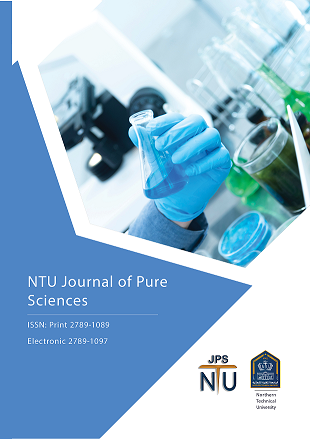Legume Peptides as Novel Antibacterial Sources for Human Pathogenic Bacteria
DOI:
https://doi.org/10.56286/xs0w3b09Keywords:
Antibacterial activity, Multidrug-resistant bacteria, NCR peptidesAbstract
Many studies have focused on the use of natural alternatives in the treatment of multidrug-resistant pathogenic bacteria, so the interest focused on Nodule cysteine-rich (NCR) peptides from legumes, exploiting their effect on the differentiation of Rhizobium bacteria within root nodules and inhibiting their growth by affecting the permeability of the bacterial cell membrane. Therefore, concentrations of 50-1.6?g/ml of four NCR peptides extracted from four legumes were used to study their antimicrobial activity on the growth of five genus of multidrug-resistant human pathogenic bacteria. The study was carried out using a disc diffusion method to examine the impact of these peptides on these pathogenic bacteria. It became evident that Gram-positive was more affected by these peptides than Gram-negative bacteria. Using the microplate method, Pseudomonas aeruginosa and Escherichia coli, Staphylococcus aureus showed clear sensitivity to peptides 1 and 2, while Acinetobacter baumannii and Proteus mirabilis were completely resistant to all types of peptides tested. Results in the infected mice revealed that 6.25µg/ml was superior to 50 µg/ml of Medicago sativa peptide in completely healing wounds in laboratory mice 17 days after infection with both Pseudomonas aeruginosa and Staphylococcus aureus. This is the first local study that used NCR peptides from legumes as selected alternatives for antibiotic use.
Downloads
Downloads
Published
Issue
Section
License
Copyright (c) 2025 Copyright The NTU-JPS is an open journal, therefore there are no fees required for downloading any publication from the journal website by authors, readers, and institutions. The journal applies the license of CC BY (a Creative Commons Attribution 4.0 International license). This license allows authors to keep ownership of the copyright of their papers. But this license permits any user to download, print out, extract, reuse, archive, and distribute the article, so long as appropriate credit is given to the authors and the source of the work. The license ensures that the article will be available as widely as possible and that the article can be included in any scientific archive. Creative Commons License This work is licensed under a Creative Commons Attribution 4.0 International License. Intellectual property rights: The NTU-JPS policies will protect the author's intellectual property rights for all submitted and printed materials.

This work is licensed under a Creative Commons Attribution 4.0 International License.
This work is licensed under a Creative Commons Attribution 4.0 International License (CC BY 4.0), which permits unrestricted use, distribution, and reproduction in any medium, provided the original work is properly cited.





